JohnQuixote
Ideal_Rock
- Joined
- Sep 9, 2004
- Messages
- 5,212
GIA Insider Article (6/30/06)
"How Do GIA Students Visually Estimate the Quality of a Diamond's Pattern?"
http://www.gia.edu/newsroom/issue/2798/2565/insider_newsletter_details.cfm#3
Marty Haske pointed out this statement in the pattern-rating guidelines:
Excellent – Very strong contrast between bright and dark areas. The diamond is extremely attractive, with no distracting pattern features. Symmetrical radiating mains are permitted as long as they don’t extend beyond the table facet or darken the area around the stone’s culet.
This is curious since many premium diamonds have visible mains - many of you know them as arrows - extending all the way to the girdle as a result of precise cutting, or patterning, of the pavilion. It seems even the diamond they use as their example for EX shows this effect (below). Maybe the description is worded strangely (?) It's true that contrast/pattern effects are darker under the table, but the mains do visibly extend under the crown facets. No doubt we can get clarification from someone at the lab.
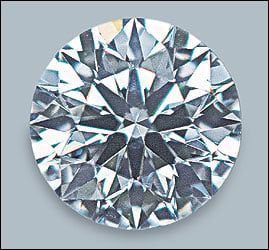
"How Do GIA Students Visually Estimate the Quality of a Diamond's Pattern?"
http://www.gia.edu/newsroom/issue/2798/2565/insider_newsletter_details.cfm#3
Marty Haske pointed out this statement in the pattern-rating guidelines:
Excellent – Very strong contrast between bright and dark areas. The diamond is extremely attractive, with no distracting pattern features. Symmetrical radiating mains are permitted as long as they don’t extend beyond the table facet or darken the area around the stone’s culet.
This is curious since many premium diamonds have visible mains - many of you know them as arrows - extending all the way to the girdle as a result of precise cutting, or patterning, of the pavilion. It seems even the diamond they use as their example for EX shows this effect (below). Maybe the description is worded strangely (?) It's true that contrast/pattern effects are darker under the table, but the mains do visibly extend under the crown facets. No doubt we can get clarification from someone at the lab.








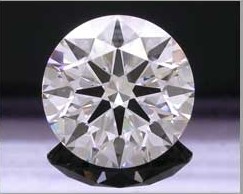

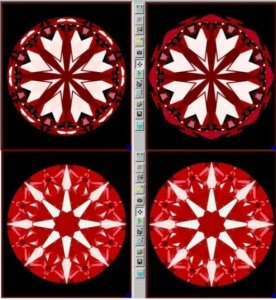
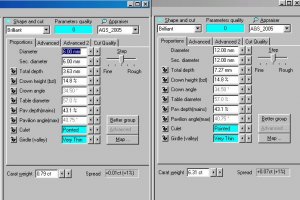
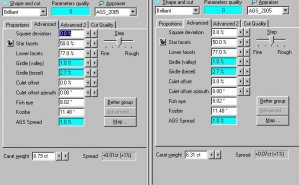


300x240.png)